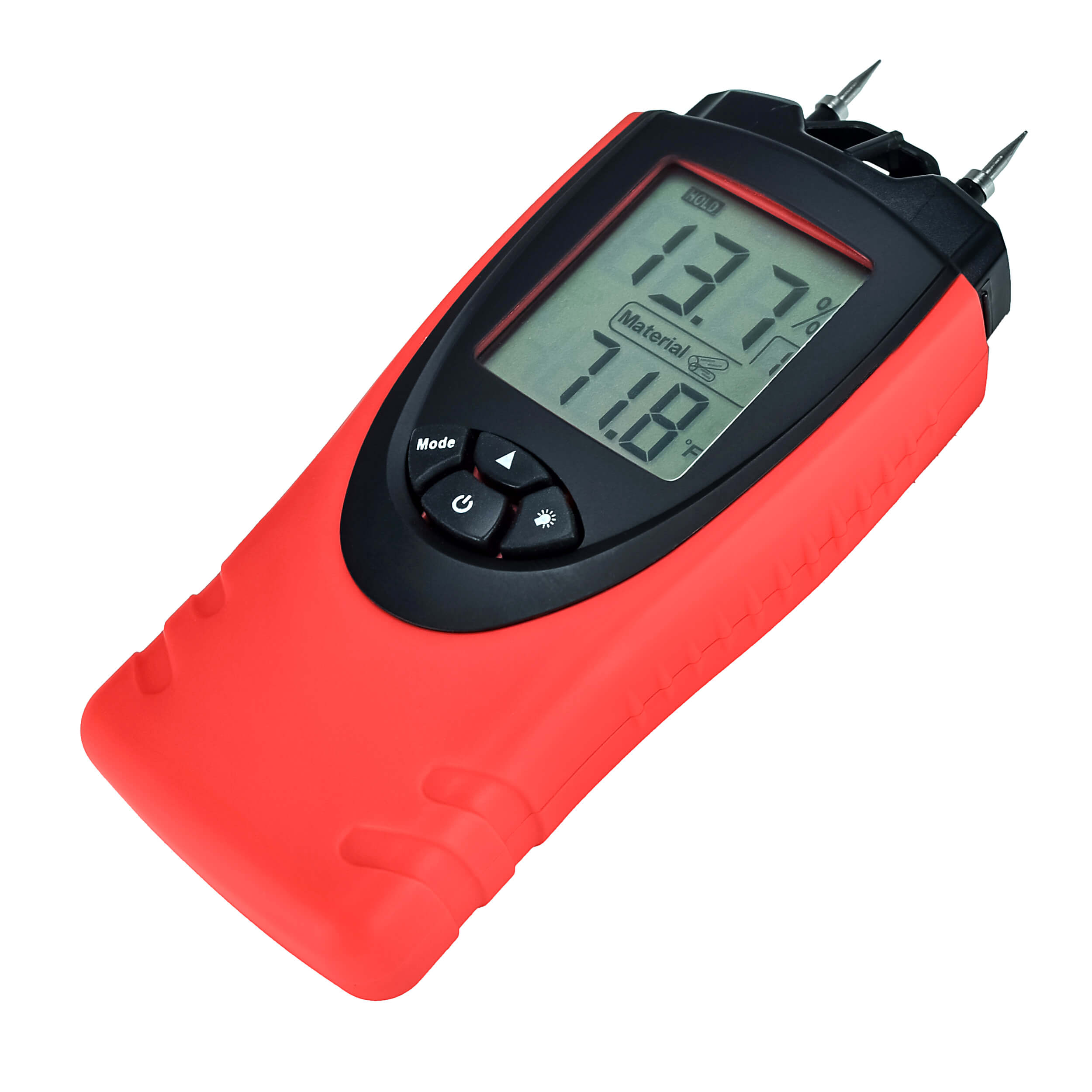Why Every Homeowner Requirements a Moisture Meter: Key Benefits and Attributes
Why Every Homeowner Requirements a Moisture Meter: Key Benefits and Attributes
Blog Article
Explore the World of Moisture Meters: Every Little Thing You Need to Know
In the realm of moisture meters exists a world of precision and usefulness that usually goes undetected. These devices, while seemingly straightforward, hold a wealth of details that can substantially affect various markets and applications. Understanding just how moisture meters operate, the different kinds offered, and their varied uses can clarify their relevance in making sure quality and performance. By exploring the details of wetness meters, one can uncover a beneficial tool that goes beyond mere dimension, offering understandings that can make a substantial distinction in numerous areas.
Exactly How Moisture Meters Work
Moisture meters run by determining the electric conductivity or capacitance of products to identify the wetness web content existing. These meters are vital devices across various markets, consisting of agriculture, building, and woodworking. By using different techniques such as pin-type or pinless modern technology, moisture meters offer precise analyses that assist specialists make educated choices.
Pin-type dampness meters function by placing the sharp pins right into the product being checked. The electric conductivity in between the pins is after that gauged, with greater wetness levels leading to enhanced conductivity. Moisture Meter. On the other hand, pinless moisture meters use electromagnetic signals to scan a bigger location without causing any damage to the product's surface area. These meters are excellent for promptly analyzing dampness degrees in big locations or completed products.
No matter the method utilized, moisture meters play a critical function in preventing concerns such as mold development, architectural damages, or product defects brought on by excess moisture. Comprehending how these meters work is important for guaranteeing the quality and stability of materials in various applications.
Types of Moisture Meters
Given the crucial role dampness meters play in different industries, it is important to recognize the various kinds available to professionals for accurately analyzing dampness levels - Moisture Meter. There are mostly two major kinds of moisture meters: pin-type and pinless dampness meters

On the other hand, pinless wetness meters use electro-magnetic sensor plates to scan a bigger area of the material without creating any kind of damages. This kind appropriates for swiftly scanning big locations and is commonly made use of for floor covering, walls, and ceilings. Pinless meters are hassle-free for taking readings on finished surfaces without leaving any kind of visible marks.
Both kinds of wetness meters have their advantages and are chosen based on the particular requirements of the work available. Recognizing the differences in between these kinds is essential for experts to make accurate dampness assessments.
Applications Throughout Industries
Building and construction specialists count on wetness meters to evaluate the wetness levels in building products like wood, drywall, and concrete, which is essential for maintaining structural integrity and protecting against concerns like rot or mold. The floor covering market utilizes dampness meters to measure the moisture content in subfloors prior to setting up various flooring coverings, preventing expensive damages due to excess dampness. In the food market, dampness meters are used to monitor and manage moisture degrees in products such as grains, nuts, and dried out fruits to maintain freshness and high quality.
Tips for Using Moisture Meters
When gauging the moisture material in various materials,Make use of the moisture meter's calibration setups to ensure precise readings. Calibration is critical for the proper functioning of a dampness meter. Before each use, it is advisable to check and readjust the calibration settings according to the specific material being examined. Furthermore, see to it the why not try this out meter is readied to the correct moisture array for the product you are measuring to acquire one of the most exact outcomes.
When utilizing a pin-type wetness meter, insert the pins to the proper deepness suggested for the product being evaluated. This makes sure that the wetness readings are taken from the appropriate depth within the material, supplying an extra exact representation of its dampness content. For pinless wetness meters, keep in mind to maintain proper call with the material's surface to obtain reliable analyses.
Frequently examine and change the batteries in your moisture meter to avoid unreliable readings because of reduced power. Store the meter in a safe and completely dry area when not in usage to prolong its life expectancy and maintain its accuracy. By adhering to these ideas, you can take full advantage of the efficiency of your moisture meter and acquire precise wetness web content measurements across various products.
Upkeep and Calibration
To ensure the accuracy of moisture content measurements, regular upkeep and calibration of the dampness meter site link are essential actions in its appropriate performance. Calibration changes the wetness meter to make sure that it supplies constant and reputable results.
Calibration must be carried out periodically, particularly if the moisture meter is made use of often or in crucial applications where specific measurements are called for. By calibrating the dampness and maintaining meter regularly, individuals can trust the precision of the moisture material dimensions acquired.
Verdict

To conclude, wetness meters play a crucial duty in various markets by properly measuring the wetness material of products. Understanding how these gadgets function, the various kinds available, and appropriate upkeep and calibration are essential for obtaining trustworthy outcomes. Whether in farming, production, or building and construction, making use of wetness meters assists make certain top quality control and efficiency in processes.

In conclusion, moisture meters play a crucial duty in numerous markets by precisely measuring the dampness web content of materials.
Report this page